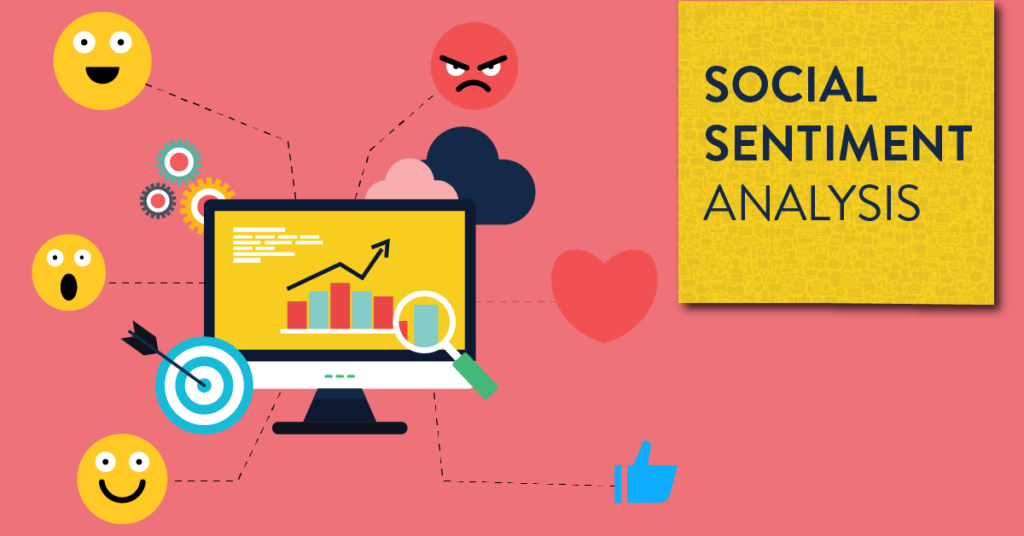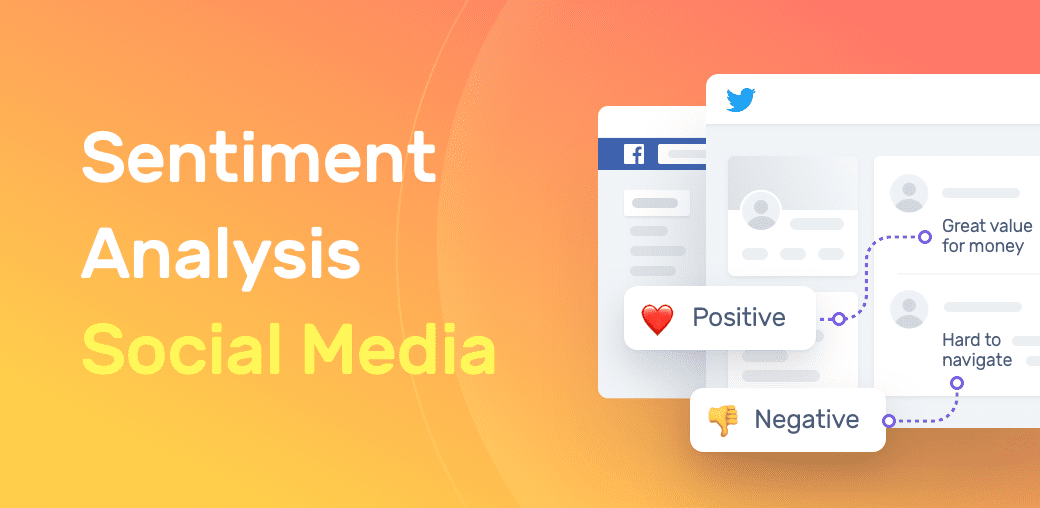In today’s digital age, understanding how your brand is perceived on social media is crucial. This is where social media sentiment comes into play. Let’s dive into what social media sentiment is, why it matters, and how you can harness it for your business’s success.
The Basics of Social Media Sentiment

1. What is Sentiment Analysis?
Sentiment analysis, also known as opinion mining, is the process of determining the emotional tone behind a series of words. It’s used to understand the attitudes, opinions, and emotions expressed within online mentions of your brand or product.
2. How Sentiment Analysis Works
At its core, sentiment analysis involves analyzing text data from social media platforms, blogs, forums, and other online sources. This analysis is typically performed using natural language processing (NLP) and machine learning algorithms to classify the text as positive, negative, or neutral.
Types of Social Media Sentiment
1. Positive Sentiment
Positive sentiment includes any social media mentions where customers express satisfaction, happiness, or approval of your brand or products. Examples might include positive reviews, compliments, or any enthusiastic mentions.
2. Negative Sentiment
Negative sentiment captures criticism, dissatisfaction, or complaints about your brand. Monitoring negative sentiment helps in quickly addressing issues and improving customer experience.
3. Neutral Sentiment
Neutral sentiment is when mentions neither lean towards positive nor negative. These might include factual statements or mentions that don’t express a strong opinion.
Tools for Measuring Social Media Sentiment
1. Overview of Popular Tools
There are several tools available to help businesses measure social media sentiment. Popular options include Brandwatch, AIM Insights, and Sprout Social.
2. Free vs. Paid Tools
Free tools like Google Alerts offer basic sentiment analysis features, while paid tools provide more in-depth insights, including advanced analytics and reporting features.
3. Features to Look for in Sentiment Analysis Tools
When choosing a sentiment analysis tool, look for features such as real-time monitoring, comprehensive reporting, customizable dashboards, and the ability to handle multiple languages.
The Role of AI and Machine Learning in Sentiment Analysis
1. How AI Enhances Sentiment Analysis
AI and machine learning significantly enhance sentiment analysis by providing more accurate and faster processing of vast amounts of data. These technologies can detect patterns and nuances in language that traditional methods might miss.
2. Machine Learning Algorithms in Sentiment Analysis
Machine learning algorithms, such as Naive Bayes, support vector machines (SVM), and neural networks, are commonly used in sentiment analysis. They help in training models to classify text data more effectively.
Benefits of Analyzing Social Media Sentiment
1. Understanding Customer Opinions
Analyzing social media sentiment gives you a clear picture of how customers feel about your brand, products, or services. This understanding can inform product development and marketing strategies.
2. Improving Customer Service
By monitoring social media sentiment, you can identify customer pain points and address them promptly, enhancing overall customer satisfaction.
3. Enhancing Marketing Strategies
Sentiment analysis helps in tailoring marketing campaigns to resonate with your audience’s emotions, increasing engagement and conversion rates.
Challenges
1. Dealing with Sarcasm and Irony
One of the significant challenges in sentiment analysis is accurately interpreting sarcasm and irony, which can lead to misclassification of sentiments.
2. Handling Multilingual Data
Social media sentiment analysis often needs to process data in multiple languages, which requires sophisticated algorithms and language-specific models.
3. Data Privacy Concerns
Collecting and analyzing social media data must be done in compliance with data privacy regulations to protect user information.
Case Studies of Social Media Sentiment Analysis
1. Brand Reputation Management
Many brands use sentiment analysis to monitor and manage their online reputation. For example, a company might track sentiment before and after a major campaign to gauge its impact.
2. Crisis Management
In times of crisis, sentiment analysis helps brands understand public perception and respond appropriately to mitigate negative impacts.
3. Product Launches
Sentiment analysis is crucial during product launches to measure initial reactions and make necessary adjustments based on customer feedback.
How to Implement Social Media Sentiment Analysis
1. Steps to Get Started
- Define your goals for sentiment analysis.
- Choose the right tools and platforms.
- Collect relevant data from social media channels.
- Analyze the data using sentiment analysis algorithms.
- Interpret the results to make informed decisions.
2. Best Practices for Accurate Analysis
Ensure that your sentiment analysis process includes human oversight to catch nuances that automated tools might miss. Regularly update your algorithms to improve accuracy.
3. Interpreting the Results
Look beyond the numbers and consider the context of the sentiments. Identify patterns and trends to make strategic decisions.
Social Media Sentiment in Different Industries
1. Sentiment Analysis in Retail
Retailers use sentiment analysis to understand customer preferences, improve product offerings, and enhance the shopping experience.
2. Sentiment Analysis in Entertainment
The entertainment industry leverages sentiment analysis to gauge audience reactions to movies, TV shows, and music releases.
3. Sentiment Analysis in Politics
Political campaigns use sentiment analysis to understand voter opinions and tailor their messaging accordingly.
Future Trends
1. Advances in AI and Machine Learning
Future advancements in AI and machine learning will lead to even more accurate and nuanced sentiment analysis.
2. Integration with Other Technologies
Integration with technologies like voice recognition and visual analysis will provide a more comprehensive understanding of social media sentiment.
3. Increasing Importance in Business Strategies
As businesses continue to recognize the value of sentiment analysis, it will become an integral part of strategic decision-making processes.
Common Misconceptions About Social Media Sentiment Analysis
1. It’s All About Positive or Negative
Sentiment analysis is not just about identifying positive or negative mentions; it also involves understanding the subtleties and context of the sentiment.
2. It Replaces Human Judgment
While sentiment analysis tools are powerful, they do not replace the need for human judgment and interpretation.
3. It’s Only Useful for Large Companies
Sentiment analysis is valuable for businesses of all sizes, helping them understand and engage with their audience more effectively.
How to Respond to Social Media Sentiment
1. Engaging with Positive Sentiment
Acknowledge and thank customers for their positive feedback. Share their content to amplify the positive sentiment.
2. Addressing Negative Sentiment
Respond promptly to negative feedback, offering solutions and showing a willingness to improve. This can turn dissatisfied customers into loyal ones.
3. Leveraging Neutral Sentiment
Neutral mentions can provide valuable insights. Use this feedback to understand what customers are indifferent about and make necessary adjustments.
The Impact of Social Media Sentiment on Brand Loyalty
1. Building Stronger Customer Relationships
By actively engaging with social media sentiment, you can build stronger, more personal relationships with your customers.
2. Increasing Brand Advocacy
Positive sentiment leads to increased brand advocacy, where satisfied customers become ambassadors for your brand.
3. Reducing Churn Rates
Addressing negative sentiment effectively can reduce customer churn rates, as customers feel heard and valued.
Conclusion
Understanding and analyzing social media sentiment is essential for businesses aiming to thrive in the digital age. By leveraging the power of sentiment analysis, you can gain valuable insights into customer opinions, improve your strategies, and build stronger relationships with your audience. Embrace the challenges and harness the benefits to stay ahead in the competitive landscape.
Interested in seeing how sentiment analysis can benefit your business? Request a demo from AIM Technologies to experience firsthand how our advanced tools can help you harness the power of social media sentiment.
FAQs
What is the difference between sentiment analysis and opinion mining?
- Sentiment analysis focuses on identifying the emotional tone behind text, while opinion mining digs deeper to understand the underlying opinions and sentiments expressed.
How accurate are sentiment analysis tools?
- The accuracy of sentiment analysis tools varies depending on the algorithms and data used. While they are generally reliable, human oversight is essential for the best results.
Can sentiment analysis predict future trends?
- While sentiment analysis can identify current trends and patterns, predicting future trends requires additional analysis and contextual understanding.
How often should businesses perform sentiment analysis?
- Businesses should perform sentiment analysis regularly to stay updated on customer opinions and trends. The frequency can vary based on industry and business needs.
What are the limitations of sentiment analysis?
- Limitations of sentiment analysis include difficulties in interpreting sarcasm and irony, handling multilingual data, and ensuring data privacy. It’s important to combine automated tools with human insights for the best results.




